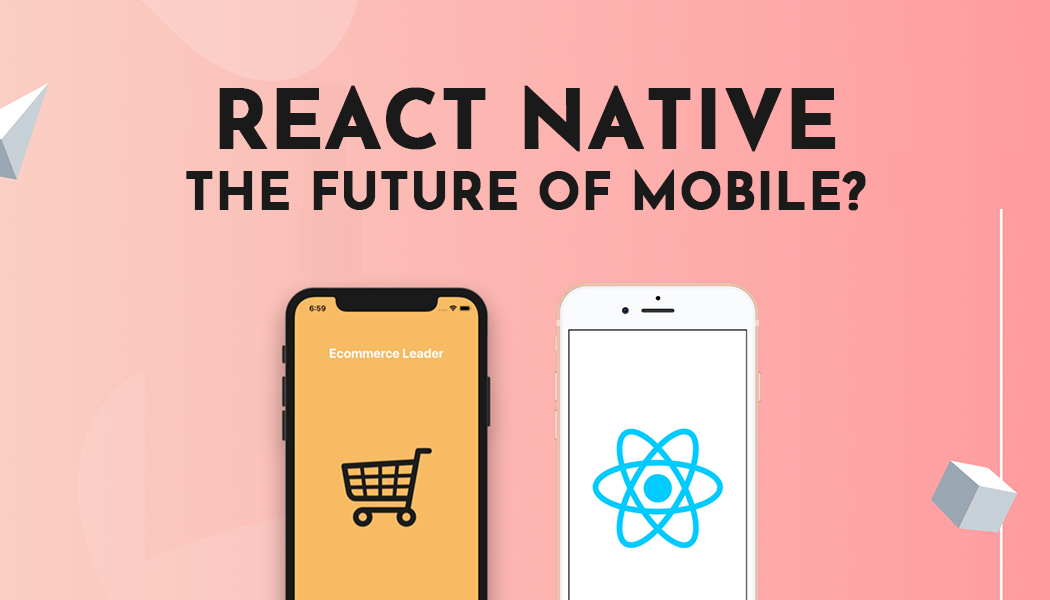Is React Native the Future of Mobile?
Mobile applications have long been part of our life. They are meant to make our day-to-day activities easier, solve some problems, and entertain. For users, it is a no-brainer. But, on the part of app developers, everything is much more complicated. The success of an application depends not only on the expertise level of developers but also on the technology chosen to create it.
In the world of mobile development, many solutions and technologies are used to build apps. And, perhaps, the most famous of them is React Native. Any React Native agency will confirm that this framework is the best option and the future belongs to it. But is it really so? Let's figure it out.
React Native current status

According to research by Statista, 42% of cross-platform application developers opt for React Native. Flutter, who gained a lot of popularity in 2020, goes second with a slight lag. Third place is occupied by Cordova, but the gap between it and Flutter is too great. So, there’s no sign of tough competition.
The RN community is also large and active. 79 repositories on GitHub are proof of this.
Is this enough to assert that the framework will firmly claim its leadership position in the future? No, but there are other arguments.
What does it take to have a future?
Let's think about the factors that may affect the future of any development framework. Obviously, we will observe these factors in the context of React Native.
Factor #1: Users POV
In most cases, the endpoint of any mobile application is the user's smartphone. Thus, the main task of any app should be to satisfy certain user needs, solve their problems, make their life easier, and so on. This is one factor that will remain unchanged in the future. However, the user does not care which language or framework the application is based on.
Does React Native help developers create applications that meet user needs? Definitely. This is obvious, even though RN serves several mobile operating systems at once. Some of the most popular and frequently used applications were created on RN. The app developers of Facebook, Instagram, Skype, Tesla, Walmart, Airbnb, and Soundcloud made their choice in favor of RN and did not lose.
These are not all popular RN applications, but these examples are enough to make sure that users like the final product.
Will the disposition of market forces change in the near future? Not much, React Native will continue bringing great apps to life. The situation can change dramatically only in the event of a major technological breakthrough.
Factor #2: Developers POV

As we said above, the user does not care which framework was used when developing the application. The situation with developers is quite different.
React Native occupies the leading positions in cross-platform development for several main reasons.
Cost-effectiveness
The first and most obvious reason is the development savings. Often, companies are trying to create an application for the two most popular operating systems — iOS and Android. In the case of React Native, the development process takes much less time, since 65-70% of the code for both variations of the app will be the same. This significantly reduces the time and money needed for development.
Static typing (using TypeScript) also speeds up the coding process and reduces the number of potential mistakes made by developers inadvertently.
Simplified maintenance
It is not enough to develop an application. Its smooth operation must be supported in the future. Due to the same reason (i.e. common code) and the presence of an extensive community, implementing ready-made solutions and updates is a seamless process with React Native apps.
Frequent updates
This is both an advantage and a disadvantage. Frequent updates help with bug fixing, but they also cause some problems. Due to frequent updates, many library components may appear to have different structures, and this issue should be kept in mind.
Well, React Native is truly popular among developers. But what about the future? We think this trend will continue. RN enjoys the support of the Facebook hyper-corporation and uses JS engines like Hermes. The best programmers are coding on it, and the community is working on improvements and timely bug fixes. Over the next 10 years, the situation is unlikely to change much.
Factor #3: Technology POV

In the Users POV section, we have already mentioned that a major change in React Native positions can occur in the event of a major technological breakthrough.
One of the main problems that arise when making any forecast for the future is technological development. The tech world is progressing at a rapid pace. We still do not know what awaits us in 2020, and it is simply not possible to make a forecast for 5 or 10 years. Factors such as universal access to free Internet, artificial intelligence, virtual and augmented reality can change not only the state of affairs in the market of cross-platform development but also in our life in general.
Therefore, purely theoretically, the RN exclusion from the lists of the best and most popular frameworks is quite possible. However, recurring to the fact that a huge corporation and a large number of people are behind this framework, it is hard to believe that RN will not be ready to weather a few storms.
In conclusion
We've looked at three main factors that can influence the future of the framework. There’s a positive forecast for two of them. So, it is possible to assume rather firmly that React Native will remain one of the most popular top-end frameworks for cross-platform development in the years ahead.




